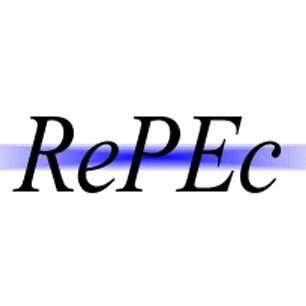Digital documentary of Uraklawoi young childrens play in a changing society on the West Coast of Thailand: The medium for implications of the ethnological study
Abstract
Aim: This ethnological study explored the adult’s perception about how the UrakLawoi young children’s Play is changing over time and the correlation of plays and the child’s developmental domains.
Method: Participants in the study were recruited from accurately conveying oral traditions, written evidence, and relevant documents. Also selected were local experts who were able to provide supporting information through extensive interviewing accurately. Data were collected through document studies, and fieldwork carried out in Ban Hau Laem, in the Sanga-U Village, in Toe Ba Liew Village at KohLanTaYai, Krabi Province, BanLeamTukkae, and KohSiReh in Phuket Province.
Findings: Findings showed that UrakLawoi young children’s play enhanced the development of their social skills in particular areas, such as making friends and positive interaction in group settings, communication and language practices, fine motor skills development, as well as the unearthing of their ancestry, history, rituals, and related stories. Also, a Digital Documentary titled UrakLawoi Young Children’s Play was produced in DVD format from the findings. Also, the video clips were made accessible on YouTube and composed of 5 parts; the UrakLawoi origin, Pulao Satuk (Koh Lanta), Play, the UrakLawoi Young Children’s Play as a life skill, and the Confidant.
Implications/Novel Contribution: The findings of this study are expected to help families, education systems, and societies explore how to augment better the cognitive, emotional, physical, and language growth capabilities of Chaolay children while also maintaining modes of Play that contribute to UrakLawois culture and history.
References
Arnas, Y. A. (2016). Childrens understanding of television commercials: A qualitative approach. International Journal of Humanities, Arts and Social Sciences, 2(1), 45-51. doi:https://doi.org/10.20469/ijhss.2.20005-1
Bento, G., & Dias, G. (2017). The importance of outdoor play for young children’s healthy development. Porto Biomedical Journal, 2(5), 157-160. doi:https://doi.org/10.1016/j.pbj.2017.03.003
Bronfenbrenner, U. (1979). The ecology of human development. Cambridge, MA: Harvard University Press. Department of Education, England. (2017). Statutory framework for the early years foundation stage setting the standards for learning, development and care for children from birth to five England. Retrieved from
https://bit.ly/3oK7doA
Feldman, R. (2012). Bio-behavioral synchrony: A model for integrating biological and microsocial behavioral processes in the study of parenting. Parenting, 12(2), 154-164. doi:https://doi.org/10.1080/15295192.2012.683342
Gaskins, S., Haight, W., & Lancy, D. (2007). The cultural construction of play. In, Goncu, Artin, and Gaskins, Suzanne (Eds.)., Play and development: Evolutionary, sociocultural, and functional perspectives. Mahwah, NJ: Erlbaum.
Granbom, A. C. (2005). Urak lawoi: A field study of an indigenous people in thailand and their problems with rapid tourism development. Lund, Sweden: Sociologiska Institutionen, Lund Universitet Press.
Gray, P. (2013). Free to learn: Why unleashing the instinct to play will make our children happier, more self-reliant, and better students for life. London, UK: Hachette Press.
Habsah, H., Siti, F. H., Yusfida, A. A., & Naasah, N. (2019). Assessing the residential and schools surrounding environments for child friendliness in precinct 11 Putrajaya, Malaysia. Journal of Advanced Research in Social Sciences and Humanities, 4(4), 136-149. doi:https://doi.org/10.26500/jarssh-04-2019-0401
Hogan, D. W. (1972). Men of the sea: Coastal tribes of South Thailand’s west coast. Bangkok, Thailand: Siam Society.
Karl, G. (1989). The play of animals. New York, NY: Appleton.
Krainatee, M. (2011). Urak lawoi coastal settlements around phuket and points to consider in building land tenure security. Journal of Social Research, 34(2), 42-56.
Marsh, J., Plowman, L., Yamada, R. D., Bishop, J., Lahmar, J., & Scott, F. (2018). Play and creativity in young children’s use of apps. British Journal of Educational Technology, 49(5), 870-882. doi:https://doi.org/10.1111/bjet.12622
Mergui. (2019). Sea gypsy. Retrieved from https:/bit.ly/3mAmypR
Oxford References. (2015). New Oxford American dictionary. Retrieved from https:/bit.ly/2TDZMB5
Piaget, J. (1962). Play, dreams and imitation in childhood. New York, NY: Sage Publication.
Project Maje. (2004). Burma "sea gypsies" compendium. Retrieved from https://bit.ly/3jK6SP5
Raising Children Network. (2006). The Australian parenting. Retrieved from https://bit.ly/3mBNFAO
Smith, P., & Pellegrini, A. (2013). Play. Retrieved from https://bit.ly/3jLsJFw
The Guardian. (2019). Playtime is crucial for a child’s development cut it at your peril. Retrieved from https://bit.ly/3jKSZ35
The Lego Foundation in Support. (2018). Learning through play: A review of the evidence. Retrieved from https://bit.ly/2HPHPgc
Ukrit, A. (2011). The dynamics of interacterions and ethic maintenance of lanta Islanders in Krabi province. Journal of Social Research, 34(2), 23-27.
United Nations Children’s Fund. (2019). The convention on the rights of the child: The childrens version. Retrieved from https://uni.cf/2TGnvk0
Vygotsky, L. S. (1980). Mind in society: The development of higher psychological processes. Cambridge, MA: Harvard University Press.
Whitebread, D., Neale, D., Jensen, H., & Liu, C. (2017). The role of play in children’s development: A review of the evidence. Retrieved from https://bit.ly/3mDrWIF
Whitebread, D., Neale, D., Jensen, H., Liu, C., Solis, S., Hopkin, E., . . . Zosh, J. (2017). Learning through play: A review of the evidence (White paper). The LEGO Foundation, Billund, Denmark.
Yildiz, . K. G., F. U. (2015). Examining the effects of computer-assisted preschool educational activities on childrens intuitive mathematical ability. Journal of Advances in Humanities and Social Sciences, 1(1), 1-8. doi:https://doi.org/10.20474/jahss1.1.1

This work is licensed under a Creative Commons Attribution-NonCommercial 4.0 International License.












.png)










